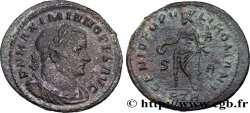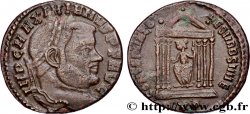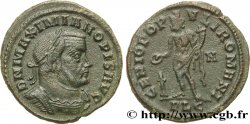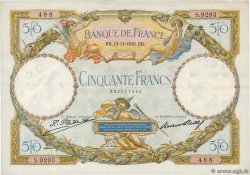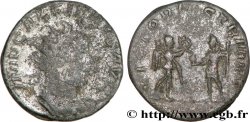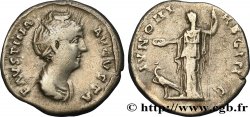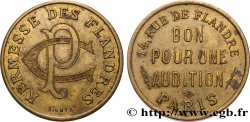Назад 1/1
brm_539575 - MAXIMIAN HERCULIUS Follis ou nummus
150.00 €
Количество
Добавить в корзину

Тип Follis ou nummus
Дата: novmebre - décembre
Дата: 307
Монетный двор / Город: Lyon
Металл: copper
Диаметр: 25 mm
Ориентация осей монеты: 6 h.
Вес: 7,41 g.
Комментарии о состоянии
Exemplaire sur un petit flan parfaitement centré des deux côtés avec les grènetis complets. Beau buste de Maximien. Joli revers. Patine marron superficielle
Ссылки в каталоге: :
Лицевая сторона
Аверс: легенда: D N MAXIMIANO P F S AVG.
Аверс: описание: Buste lauré et cuirassé de Maximien Hercule à droite drapé sur l’épaule, vu de trois quarts en avant (B*01).
Аверс: перевод: “Domino Nostri Maximiano Pio Felici Seniori Augusti”, (À notre seigneur Maximien pieux heureux auguste le plus âgé).
Обратная сторона
Реверс: легенда: GENIO - POP ROM/ (AUTEL)|N// PLG.
Реверс: Описание: Genius (Génie) debout à gauche, coiffé du modius, le Génie porte l’himation, tenant une patère de la main droite et une corne d'abondance de la main gauche.
Реверс: перевод: “Genio Populi Romani”, (Au Génie du Peuple romain).
Комментарий
Rubans de type 3. Cuirasse et épaulière cloutées. Les ptéryges sont aussi cloutées. Petit pand de paludamentum sur l’épaule. Un changement radical intervient dans la représentation du Génie au revers. Il est maintenant normalement revêtu de l’himation au lieu du manteau tombant sur l’épaule (paludamentum). Une autre innovation est l’apparition d’un N dans le champ à droite. Nous nous sommes interrogés sur la présence et la signification de ce N. Il pourrait tout simplement signifier “Nova” (nouvelle) pour rappeler techniquement la réduction du follis du 1/40 L. au 1/408 L. Nous n’avons relevé aucune liaison de coin pertinente. Cet exemplaire est cité dans l’ouvrage de Pierre Bastien.
Type 3 ribbons. Studded breastplate and shoulder guard. The pteryges are also studded. Small patch of paludamentum on the shoulder. A radical change occurs in the representation of the Genie on the reverse. He is now normally dressed in the himation instead of the mantle falling on the shoulder (paludamentum). Another innovation is the appearance of an N in the field on the right. We wondered about the presence and meaning of this N. It could simply mean “Nova” (new) to technically recall the reduction of the follis from 1/40 L. to 1/408 L. We did not note any relevant corner bond. This example is cited in the work of Pierre Bastien
Type 3 ribbons. Studded breastplate and shoulder guard. The pteryges are also studded. Small patch of paludamentum on the shoulder. A radical change occurs in the representation of the Genie on the reverse. He is now normally dressed in the himation instead of the mantle falling on the shoulder (paludamentum). Another innovation is the appearance of an N in the field on the right. We wondered about the presence and meaning of this N. It could simply mean “Nova” (new) to technically recall the reduction of the follis from 1/40 L. to 1/408 L. We did not note any relevant corner bond. This example is cited in the work of Pierre Bastien







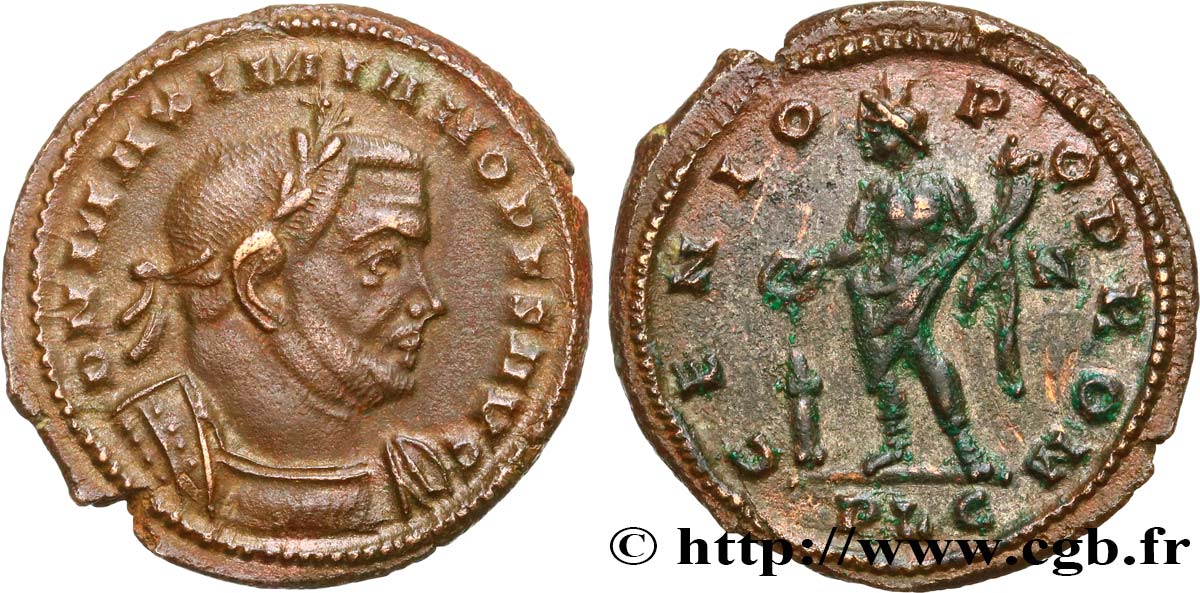
 Cообщить об ошибке
Cообщить об ошибке Распечатать страницу
Распечатать страницу Отправить мой выбор
Отправить мой выбор Задать вопрос
Задать вопрос Consign / sell
Consign / sell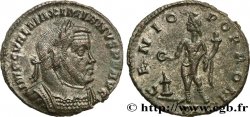
 Информация
Информация